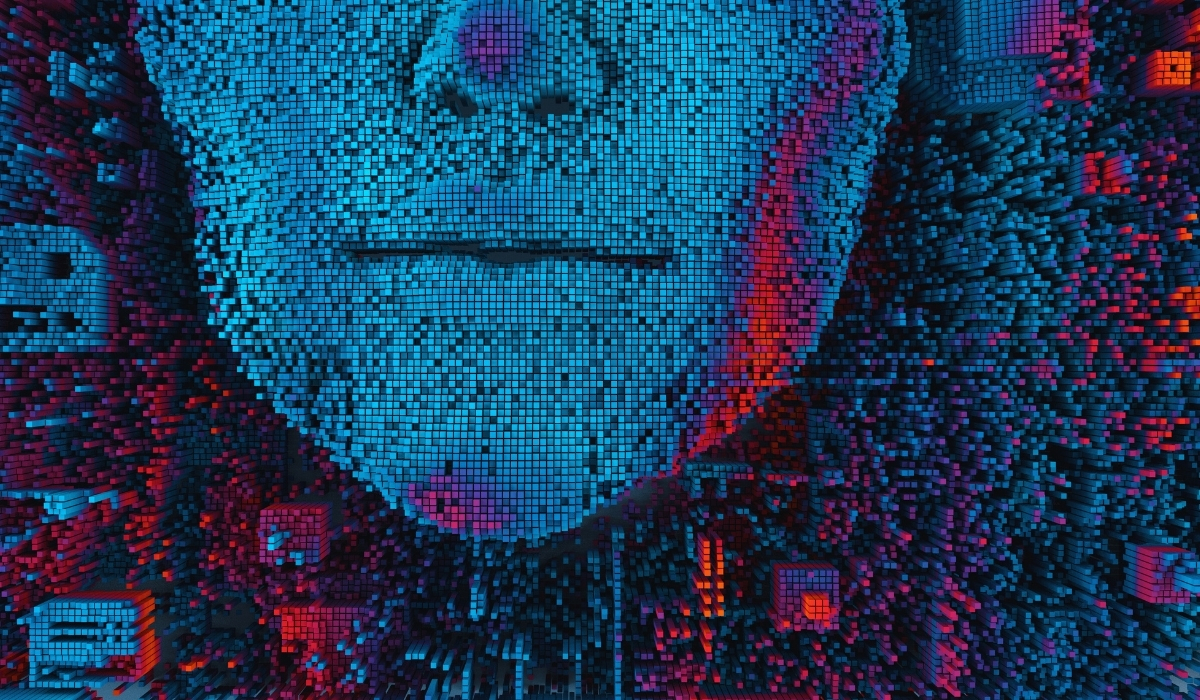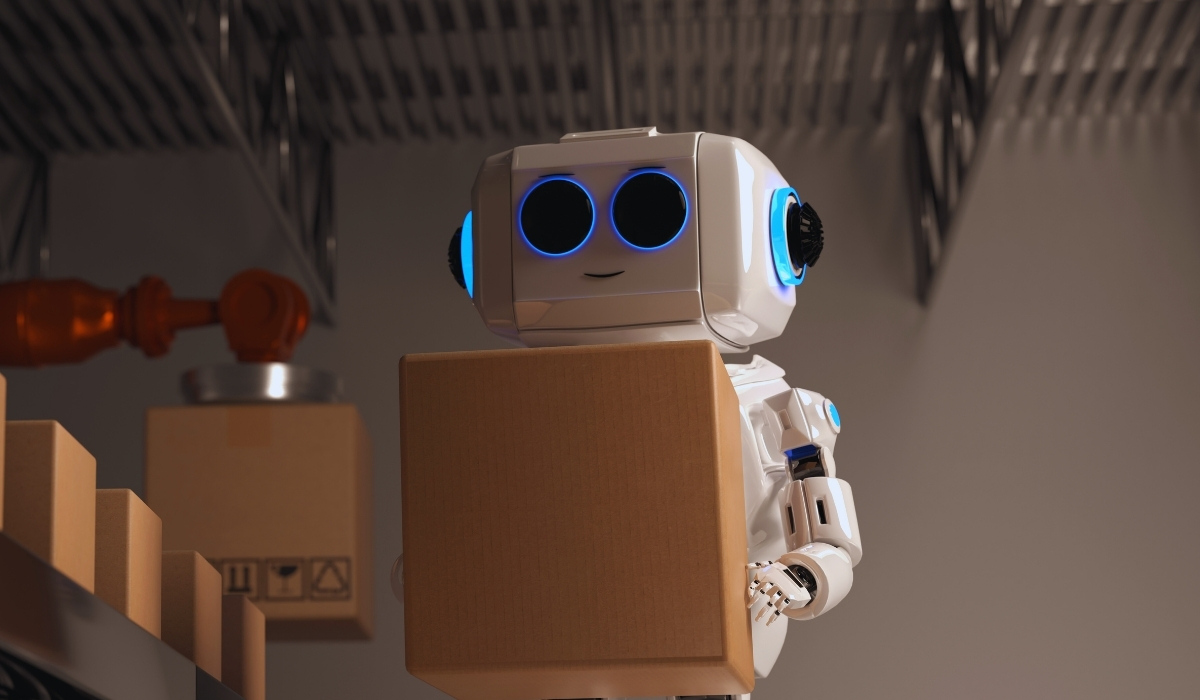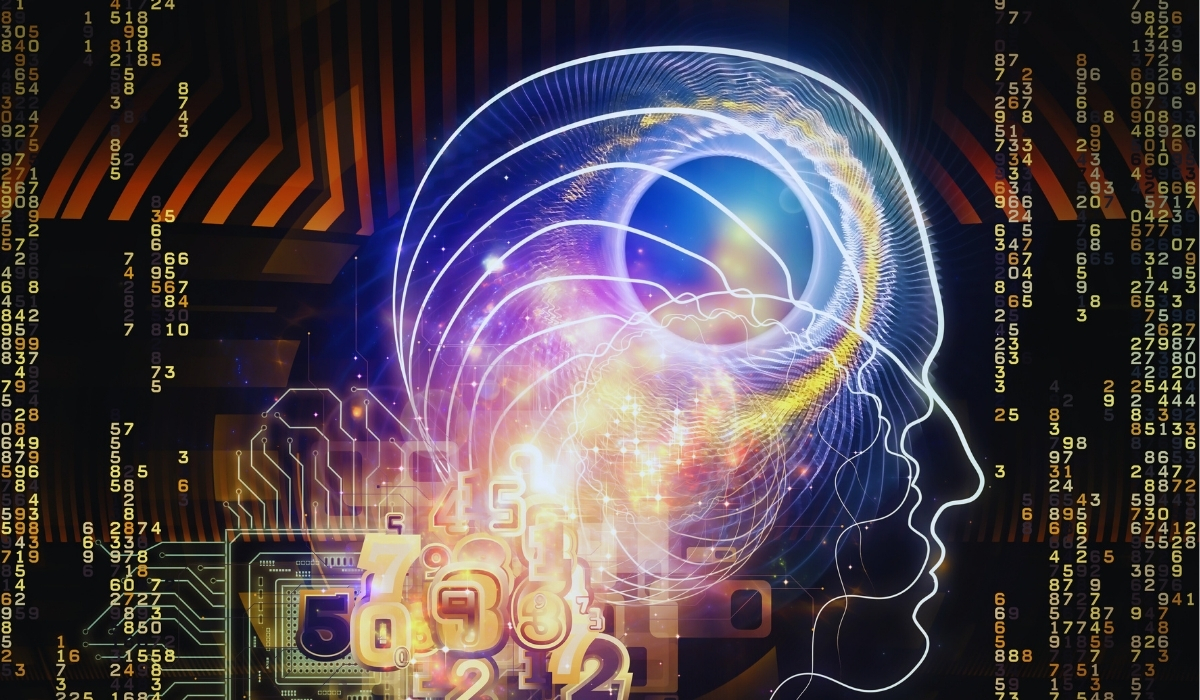There are still many aspects of human consciousness and intelligence that we do not fully understand. Currently, we only comprehend a tiny fraction of how human consciousness and intelligence work. Perhaps in 100 or 500 years, our understanding might evolve significantly, but as of now, it doesn’t seem likely that artificial intelligence, modeled after the human brain, can surpass or become superior to human intelligence.
Artificial intelligence is trained with the data provided to it. Imagine we have a database of basketball data, and we train our AI model with this data and ask it questions about basketball. We input a question and receive an output. When asked something related to basketball, the model is likely to provide the correct answer if it is well-trained. However, if asked about topics other than basketball, it may not be able to answer because it operates only on the data it was trained with. In this example, since the AI is trained on a specific dataset, we expect it to generate knowledge only within the scope of that training.
Now, consider if we provided all the world’s data to an AI. In this case, nature itself would be a source of data. Everything on Earth—winds, seas, living creatures, plants, even ants and insects—constantly produces data. Each is a potential data source for us. If we can measure and record them, our data pool expands. With a broad data pool, a general AI model can emerge. We could have a model with knowledge on almost every subject, not just specific ones. This type of AI could possess detailed knowledge on nearly any topic. However, regardless of how extensive the dataset we feed into AI, it will continue to generate outputs based on the data it was trained on. AI is designed for a specific purpose, and developing additional motivation or consciousness independently is not feasible with our current understanding.
The Journey of AI to Consciousness – An Impossibility?
Why can’t AI achieve consciousness? Because the existence of consciousness is a very different matter that cannot be measured by the amount of data or capacity. Scientific American defines consciousness as follows: “Consciousness is everything you experience. It is the tune stuck in your head, the sweetness of chocolate mousse, the throbbing pain of a toothache, the fierce love for your child and the bitter knowledge that eventually all feelings will end.”
In humans, consciousness has emerged as a result of millions of years of evolution. Even among animals, it is debated whether they possess consciousness or awareness of their existence. Human consciousness is the most advanced level on our planet, and it is the outcome of millions of years of evolution. Currently, it doesn’t seem possible for AI to develop a consciousness comparable to this evolutionary process, no matter how vast the data set or powerful the processors used. AI can solve complex problems with data and processing power but developing independent consciousness or motivation is not achievable with our current knowledge. Considering consciousness as an evolutionary and biological process, AI reaching this level remains a complete mystery. Current AI systems, even if not rule-based, cannot go beyond simple programming principles compared to real consciousness. Human consciousness includes creativity, talent, exploration, learning, and even the capacity to learn how to learn. Humans can forget things, recognize their mistakes, and experience a range of emotions, both good and bad. Emotions like anger and frustration influence our ability to learn new things and adapt to change. These abilities have developed over millions of years through evolutionary processes.

The current state of AI lacks these complex features of human consciousness. AI can solve complex problems with data and processing power and demonstrate learning abilities based on a specific set of information. However, when compared to emotions, creativity, and other uniquely human qualities, it seems highly unlikely that AI will develop consciousness akin to human consciousness anytime soon.
I have deep doubts about this. Even in centuries or thousands of years, I believe AI will remain as machines that learn from data and provide us with outputs. Especially as long as this data is human-generated or planet-based, it seems unlikely that AI will achieve human-like consciousness. As a data scientist with a Ph.D. in this field, I can say that data ultimately consists of files made up of rows and columns. The size of these files doesn’t matter. The model’s capacity is related to its ability to perform calculations with the computer’s processing power. Simulating complex elements like human emotions, experiences, and consciousness with data alone would require AI to possess these features. However, currently, AI’s development of such consciousness seems a very distant possibility.
Let’s delve deeper into this topic and challenge our thinking. Let’s reassess the relationship between AI and data. To summarize what we’ve discussed: AI learns from the data provided to it. It gains knowledge on the subjects covered by those datasets. Since AI is trained with human-based data, it learns from a human perspective and produces outputs accordingly. Therefore, no matter how advanced AI becomes or how large the datasets used to train it are, its primary function will remain to learn from given data and generate results based on that data. Additionally, training a model with large datasets is a costly and resource-intensive process. This is essentially what models like ChatGPT do. To achieve general AI, hundreds of thousands of different topics and millions of different headings and contents are used. These contents include books, blog posts, Excel files, images, articles, forums on the internet, social media posts, and news websites, in all forms and formats. This broad dataset is necessary to create general AI. The term “general AI” here is used in a positive sense, meaning having a wide scope. General AI has the ability to cover many different subjects, unlike AI developed for a specific area of expertise. For example, compared to AI developed solely to answer questions in a telecommunications company’s call center, general AI has a much broader knowledge base. Thus, general AI is more comprehensive and can provide information on many different topics.
Whether general or specialized, AI is just a machine or robot that performs the instructions given to it. It is trained with the data we provide and operates within that framework. AI functions as a tool that executes our commands and does not have the capacity for independent thinking, decision-making, or consciousness. Yes, currently, AI can be described as merely a complex machine.
From Data to Consciousness: Can AI Surpass Human Intelligence?
So, under what circumstances could AI cease to be “artificial” and possess real intelligence or consciousness? Let’s set aside the term “consciousness” for now, as it’s a much more complex and different topic, but I think the possibility of “intelligence” can be considered as follows: AI could potentially exhibit intelligence if it generates a solution in a way that was not taught or expected by us, without relying on the connection between related subjects. The crucial point is if AI comes up with a solution that we did not anticipate, that is not included in our datasets, and that involves an approach we did not describe to it. For example, if we ask AI to solve a problem, and it presents a solution with an unforeseen approach, which we didn’t directly teach or expect, this might allow us to speak of intelligence. At this point, I’m not talking about AI simply mimicking a human. Because when we tell it to mimic a human, it can do so. However, when the mimicry mechanism fails, and it still takes control and produces an original and unexpected output like a human, could this situation possibly imply real consciousness? This is an open question for debate.
It is difficult to reach a definitive judgment on this matter. Predicting the future development of AI with precision is nearly impossible. If someone claims they can predict what will happen tomorrow, a month from now, three months later, a year, or ten years later with certainty, they are probably not telling the truth. Because AI is developing at an unpredictable speed. We learn something new every day, and we encounter different and more advanced features daily.
The Intelligence of Machines – Can AI Surpass Humans?
This rapid development is evident not only in software but also in the field of robotics. Currently, AI is not just limited to screens but will soon enter our lives mechanically as well. In the near future, we will see robots that perform tasks in our homes and engage in conversations with us. These robots will be devices that can walk, run, have hands and feet, talk, see, and touch. However, developing such robots is no easy task. It is challenging to integrate these abilities into a robot mechanically and enable it to act like a human and perform daily tasks. Placing motors, storing energy, ensuring these systems work flawlessly, and performing tasks without harming the people around are complex and difficult processes. However, the possibility of such developments seems imminent in the near future. Currently, we are seeing such capabilities in software, but integrating these abilities into a robot mechanically to behave like a human is a more difficult issue.
I must mention that I was recently surprised when a robot brought my meal from the kitchen in a restaurant. Below is a video I took, where we watched the robot happily delivering our orders to our table. Although it didn’t have hands, arms, or legs like a human, robots have already taken over some tasks.
New developments in robotic science and AI technology occur continuously every day. It is safe to say that AI software is almost ready to be used as a control system for a robot. Currently, we have many successful mechanical examples testing this technology. For instance, if you integrate ChatGPT-4o into a physical robotic system, this system can engage in dialogue with you and provide suitable solutions on various topics. These abilities are possible even with today’s technology. However, there are still some challenges in performing more complex mechanical tasks. For example, if you ask a robot to “bring me a glass of water,” the robot must first recognize your location and relate this to other parts of the house to determine the kitchen’s location. It then needs to find the safest and most accurate path to the kitchen without colliding with objects or people. The house may have dynamically moving people, pets, or objects. The robot must navigate these obstacles and reach the kitchen. Upon arrival, it needs to locate the kitchen cupboard and appropriately open the door. It should determine which hand to use, how much pressure to apply, and the correct angle to open the door. While picking up a glass from the cupboard, it must handle it gently without hitting other glasses and without squeezing too hard on the glass. After identifying the glass, if there is a water purifier, it will place the glass under the purifier’s faucet and turn on the tap, allowing the water to fill. The robot must monitor the glass to ensure it fills precisely and doesn’t overflow, then turn off the faucet at the right moment. After filling the glass, it must carefully bring the now full glass to its owner. However, this process can encounter a series of challenges. Firstly, the weight of the glass is different when empty versus when full. The robot must adjust its grip accordingly to avoid spilling the water. Moreover, the owner might have changed position. Initially, they might have been sitting on the sofa in the living room but have now moved to the dining table or might be standing. The robot must locate the owner and present the glass from the correct angle and position. This may seem like a simple task, but it involves many complex calculations and decision-making processes. These processes demonstrate that robots need to develop their abilities to handle complex environmental interactions and delicate tasks. Although we haven’t reached this level for everyday use yet, it’s foreseeable that such developments will be possible in the near future.

To successfully accomplish such tasks, the software and hardware systems of robots must work harmoniously together. The robot must identify objects with its visual recognition system and make the correct decisions to execute actions. It must continuously analyze its surroundings, recognize objects through video or photo images, and perform necessary operations. Meanwhile, in the background, AI continuously processes these actions. For example, it repeats steps like “Yes, this is water. Yes, this is a glass. Now, I have taken the glass and filled it with water. Is this water? Yes, this is water.” I believe such robotic capabilities will soon become a reality. Depending on the advancements in robotics, we will see how soon these robots will integrate into our lives, but it’s safe to predict that it will certainly happen.
In essence, all of this provides a perspective on the future of AI. Where did the development of AI begin? Without delving deeply into its history, AI has evolved from processes that started in the 1950s, even the 1940s, to the present day. It can be said that AI has touched almost everyone’s life from the 2020s onwards. The rapid development of AI has turned into a revolution affecting every aspect of our lives. With advancements in both software and robotics, it’s evident that this technology will become even more widespread and sophisticated in the future.
At this point, I want to wrap up my explanations about AI. If there are still some questions, I will try to explain them from different angles. We defined AI as a system that learns from the data we provide. The learning of AI is fundamentally similar to the mathematical function of linear regression. This is the underlying principle of AI algorithms. Artificial neural networks, often used in AI systems, are designed in a structure similar to the human brain. Though theoretically old, today’s neural networks have been developed and diversified in recent years. Artificial neural networks perform mathematical calculations that create connections between inputs and outputs. Each node functions like a mathematical operation; it receives input, processes it, and generates an output. This output is passed to the next neuron, and the training continues this way. The training process is essentially the creation of a mathematical model. The model is the result of these mathematical operations performed on the data. In other words, the output of the AI model is determined through these mathematical functions. Each calculation step is part of the model’s learning process.
AI is fundamentally a mathematical function. For example, when you write a sentence to AI and expect a response, this process actually happens through mathematical operations. First, the sentence you wrote is converted into numerical values. These numerical data are fed into the model. The model performs calculations on these data and produces an output. This output is then converted back into numerical values and, if a textual output is expected, matched with corresponding words. Ultimately, these words return to you as a response. This process happens in the blink of an eye and requires very high processing power.
On the other hand, we focus on whether AI can achieve consciousness or how conscious it can be. In this article, we seek an answer to this question. Let’s return to the starting point… Can AI achieve consciousness? And if possible, how conscious can it be?
When we provide all the world’s data to an AI and train it very well, and if the processors are powerful enough, the AI can possess more knowledge than a human. For example, what is the difference between training an AI with 1 million rows of data versus 1 billion rows? We might think that AI trained with more data can give better answers, find more effective solutions, and be more helpful to us. But could there be a difference in consciousness between AI trained with millions of rows of data versus AI trained with billions of rows?
Can Artificial Intelligence Gain Consciousness? The Challenges of Achieving Real Intelligence
As we increase the amount of data, it is certain that the AI can acquire more knowledge and understand a broader world. However, does increasing the amount of data allow AI to gain consciousness? In other words, with the increase in data, is it possible to undergo a structural change or consciousness formation? At this point, I want to emphasize that more data leads to more learning and understanding, but whether this difference leads to the formation of consciousness is another matter. Increasing the amount of data, does it mean that AI achieves consciousness? I think this is not possible. The amount of data is not directly related to consciousness. We can conduct a thought experiment: If we train AI with 1 million rows of data, does a small or limited consciousness form? Or if we train it with 10 trillion rows of data, does more consciousness form? This approach misunderstands the concept of consciousness. Consciousness cannot be measured or reduced and increased by the amount of data; it either exists or does not. Therefore, it would be correct to say that AI’s path to consciousness does not lie in this direction. AI can process data and learn from it, but this learning process does not develop consciousness. Consciousness is a more complex phenomenon that cannot be fully explained by the amount of information and data.

It might seem bold to say there is no fundamental difference between past calculators and current AI systems. However, both are systems that process data and perform mathematical calculations. The difference lies in the amount of data used, the developed algorithms and models, and, of course, the energy and processing power. These factors can transform even a calculator into an AI. AI, like a calculator, is essentially a system built on mathematical calculations. We provide inputs to a calculator for addition or subtraction operations. The calculator performs the operation and gives us the result. AI works in a similar way. It is fundamentally structured on mathematical and statistical models. There is no format difference between these two systems. When I use the term “format,” I mean that systems like AI and calculators are entirely based on mathematical and statistical models. However, consciousness is something beyond mathematical calculations, and therefore it is different from the principles on which AI operates.
Let’s do a mental exercise again and see what we need to turn a calculator into AI. First, we need a large amount of data. We need to teach AI what to do and how to do it. For this, a suitable model and algorithm must be developed. This determines which operations the AI will perform and how it will perform them. AI needs a high amount of processing power and energy to carry out complex operations. These hardware elements enable AI to process data quickly and efficiently. When we bring these elements together, we can transform a calculator into AI. And if we did, could we call something named a calculator conscious?
Eventually, the subject of consciousness requires a completely different experience, a different application, and a different perspective. Perhaps, to understand consciousness, we need to forget what we know and approach it from a perspective we have never considered before, who knows. Currently, what AI does is just performing calculations and executing our instructions.
In conclusion, the development of AI is progressing rapidly, and it is certain that it will become even more sophisticated in the future. However, to reach the depths of human consciousness and intelligence, AI needs to go beyond its current mathematical and statistical foundations. At this point, it is important to remember that AI is just a tool that operates with the data we provide. It will be interesting to see whether AI will have the ability to think and make decisions like a human in future developments.










